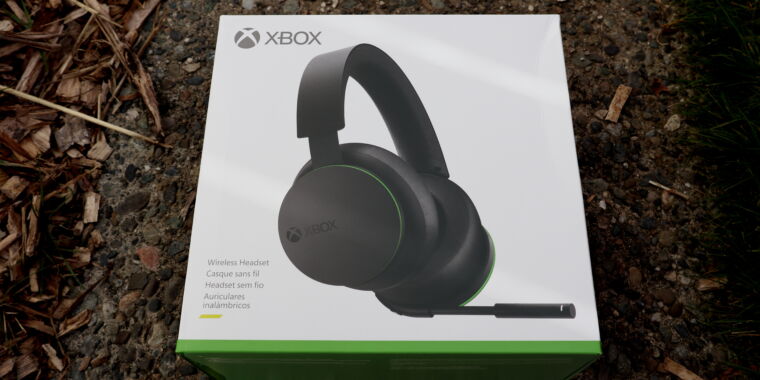

Housed inside this metal box, springs and tensioners measure the change in resistance and convert it into an electrical signal, which is then interpreted by the console as a specific direction and degree of movement. Each high-strength plastic lever connects to a potentiometer and a tact switch. The two joysticks are situated at the top left and bottom right of the Xbox gamepad.
#Xbox wireless headset cutting out plus#
In 2023, Sony released the DualSense Edge, which features all of the same cutting-edge internals plus an array of hardware and software-based customization options, such as remapping button inputs, adjusting stick sensitivity, swappable stick caps and back buttons, and replaceable stick modules. This responsive touchpad offers an additional layer of functionality and convenience, while the built-in microphone array allows for quick voice chats without the need for a headset. All in a split second, the lightest pressure on the trigger returns sensations ranging from a bow tautening, a car running out of fuel, or even bugs crawling around inside the controller.Īnd on the face of the PS5 DualSense gamepad, just above the dual analog stick potentiometer housings, we find the touchpad, complete with the same surface-mount packages we saw in the Switch SNES controller. The flat plate you’re looking at is the dedicated potentiometer circuit board, which relays the player’s inputs to the PlayStation. The spring in the upper left activates a small gear, which turns a larger one that connects to a small motor with a worm drive. The halo of springs you can see on the top and bottom of the housing help translate that movement into controlled vibrations.īut the DualSense’s real edge is its adaptive trigger technology, which adjusts the level of resistance you feel when you press the triggers (L2/R2), simulating the tactile sensation of interacting with different objects and environments in the digital world. When an electrical current passes through the voice coil, it generates a magnetic field that makes the mass oscillate along a linear path within the housing. The mass, typically a small magnet or weight, is attached to the voice coil. The voice coil consists of a wire wrapped around a cylindrical former. At the core, we can make out the two main elements: a voice coil and a mass. Cropping into the CT scan from the side, these rumble motors look more like an audio speaker than the usual weight spinning on a shaft. Gameboy CompendiumĪ linear resonant actuator is nestled in each handle of the DualSense controller. For more on Nintendo’s iconic handheld gaming systems - including details of the Switch console - check out our January 2022 Scan of the Month. It also facilitates automated assembly processes, reducing costs and increasing production efficiency. The evolution in engineering between these two gamepads has opened the doors to higher component density, faster assembly times, and improved electrical performance. Cropping into the battery, we can crisply visualize the location of the anode tab, connected to the positive terminal of the battery and the leads.

The battery lasts up to 20 hours in Switch, so should go even longer here because there are no haptic motors or joystick. The newer controller features the same lithium-ion battery that’s inside the Switch Joy-Con. This solder joint ensures a secure and reliable electrical connection between the wire and the circuit board. The controller cable attaches to the back of the original SNES gamepad circuit board with a soldered 5-pin joint. To the right of the BGA is a Quad Flat Package (QFP) for some of its integrated circuits. The BGA provides a more compact and efficient way of connecting the microcontroller to the circuit board, allowing for a higher density of connections. On the left, we see a Ball Grid Array (BGA), a type of surface-mount packaging for integrated circuits. The Switch controller has more advanced connection interfaces. The connection interface is a traditional through-hole design, where the pins of the chip pass through holes in the circuit board and are soldered on the other side. This chip converts button inputs into digital signals that can be transmitted to the console. Zooming into the original Super Nintendo controller, we find a 12-bit shift register chip. The Switch circuit board has much finer traces, densely packed components, and more intricate routing to accommodate the increased functionality and advanced features of the controller, such as the battery-powered wireless connection to the Switch console. We see exactly where each of the buttons makes contact with the circuit board. The original circuit patterns in the original gamepad (on top) consist of basic traces and connections, with larger components spaced farther apart. The majority of internal real estate in both gamepads is taken up by circuit boards.


 0 kommentar(er)
0 kommentar(er)
